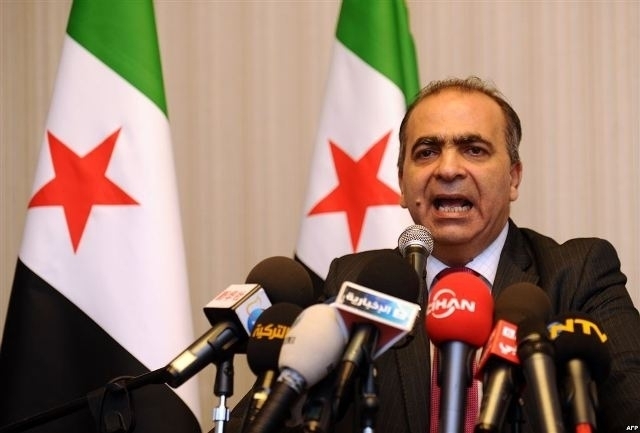The Iranian interference in Syria, Lebanon, Iraq and Yemen; the Libyan mess; the dangers threatening Egypt as a result of the spread of ISIS and Al-Qaeda in Libya and Sinai; the dominance of these two organizations in Syria, Iraq and recently in Yemen; Iran's attempt to control these communities under sectarian pretexts, reviving a conflict dating back nearly 1,500 years – all of these factors have removed Arab-Arab differences based on ideological contradictions or competition, as the Arab region has been almost completely transformed into a non-Arab power-zone.
Political Islam has attempted to present the Arab Spring as a purely religious phenomenon since the revolutions ignited, encouraging extremist organizations to attempt control over these movements – replacing slogans of freedom, democracy, and political pluralism with the slogans of a caliphate and an Islamic state
The flag of Syrian independence – a symbol of Free Syria, a Syria of the fathers of independence, who built the modern Syrian state under the banner of "religion for God, Syria for all" following the Baathist coup in 1963 – was replaced by the black flags of extremist organizations, committing crimes no less appalling than the crimes committed by the tyrant regime since the revolution’s outbreak.
The Arab communities and their countries, without exception, are today under two major threats: the first is the extremism of Al-Qaeda and the Islamic State of Iraq and Syria, the other is the Iranian conquest which plans to hold influence over the Arab region, along sectarian lines no less dangerous and obscurantist than ISIS and similar organizations. Furthermore, there are two other powerful non-Arab forces. The first is Syria’s Turkish neighbor, which despite its friendship to the Syrian people and its brotherly treatment to Syrian refugees, whose national interests control its attitude towards the changes taking place in the Arab region. The other force is Israel, which is not and will not show solidarity to the Arabs and Muslims. Israel prefers to exploit the Syrian Holocaust and welcomes Syria’s destruction, along with Hezbollah and the mullahs' regime in Iran, while taking advantage of the medieval sectarian ideology that drives these players into Syrian bloodshed.
There is a major absence of an effective ‘Arab axis’, capable of countering the Iranian ambitions that exploit sectarian divides, along with the Israeli ambition to fragment and burn the region. It is well known that the presence of extremist organizations like ISIS and Al-Qaeda facilitates the work of these two regional powers, as it is no coincidence that ISIS and Al-Qaeda targeted everyone except Israel and Iran.
The primary task of the Syrian national opposition, the Arab and Muslim intellectuals and the Arab governments is encouraging the creation of this Arab axis to coordinate with the friendly countries of the region – and international community – to find solutions to safeguard the rights of these nations and societies. Failure to do so will be at the expense of these countries and the unity of their communities, whether those being destroyed now or those yet to be destroyed. An Arab axis that includes Saudi Arabia, Egypt and Jordan, in addition to the national democratic forces in the Arab Spring countries, who would be able to protect their own nations.
Translated and edited by The Syrian Observer


